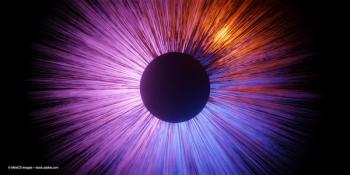
Home monitoring patients for AMD: Targeting CNV
Investigators have found that 78% of neovascular AMD cases have been detected using the PHP home monitoring system.
Reviewed by Marcus T. Altman, MD
Home monitoring of patients may be even more valuable than initially expected. A recent study found that a large proportion of incident neovascular cases of
If left untreated, AMD with CNV is a leading case of permanent vision loss in older patients, and early treatment when the vision is still good has resulted in better VA outcomes, Marcus T. Altman, MD, a second year ophthalmology resident at the Casey Eye Institute, Oregon Health and Science University, Portland, pointed out.
Related:
The currently available technology used in the study, the ForeseeHome Preferential Hyperacuity Perimeter (PHP) (Notal Vision, Ltd), is a major step forward from use of the Amsler grid, which is used to monitor patients at home. The Amsler grid is noted for its low detection rates and low sensitivity and specificity, which are not ideal for monitoring patients to detect CNV, Altman said.
The PHP is approved for in-home monitoring of progression of retinal abnormalities. The table-top device can monitor each eye individually and the patient can use a mouse to engage with the program.
Related:
“The technology is based on hyperacuity, ie, the ability to detect subtle differences and misalignments of objects arranged in a line,” he said. “This is thought to be a higher sensitivity test for measuring and monitoring changes in VA compared with the standard 2-point discrimination test.”
The PHP test comprises a series of dots arranged in 1 straight line in which a few dots are misaligned. The series is displayed for 160 milliseconds. Patients use a mouse to point out the most prominent distortion in the line of dots. Patients with retinal pathology may identify additional pathological distortions elsewhere in the line that suggest the location of areas of CNV development.
Prospective study
Altman and colleagues conducted a prospective observational study to determine the frequency of conversion to CNV in patients with intermediate AMD over a 5-year period using the PHP device. The study patients were 55 years or older with intermediate AMD and a VA of 20/63 or better in the study eye.
Related:
The patients participated in a qualifying test conducted in the office setting to identify the patients most likely to use the PHP device successfully. Those who qualified then established a baseline score at home with the device. If that step was successful, the patient moved on to daily home use of the device. Patients were monitored for 5 years and could trigger an in-office visit either by a device alert or by reporting a visual symptom. If no CNV was detected at the visit, the patient could then re-establish a baseline with the device to continue home testing, Altman explained.
Related:
A total of 91 patients were qualified to use the device, and of these, 86 began testing at home. Eighty-two patients (132 eyes; average age, 73 years; mean VA, 20/28) ultimately established a baseline to continue home testing.
During the 5 years of the study, 41% (95% CI 32%-50%) of participant eyes had at least 1 alert visit. There were a total of 100 alert visits, 90 of which included a PHP alert with or without an associated symptom and 10 alerts were for a symptom only, Altman noted.
Related:
During the follow-up clinic visits, 78% (7/9) of cases of CNV were detected by a PHP alert. In 5 of these 7 cases there were no reported symptoms. 67% (6/9) CNV cases were detected on the eye’s first alert. In 22% (2/9) cases of CNV, the CNV was detected only by symptoms and no device alert, indicating a 22% device false negative rate over the 5 years. Of 90 device-triggered clinic visits, 7 resulted in CNV, indicating a 92% false positive rate (95% CI 85%-97%). The mean time to development of CNV was 2.1 years. The mean VA when the CNV was detected was 20/32.
“A relatively large proportion of incident neovascular AMD cases, 78%, was detected using the PHP home monitoring system,” he concluded. “The device had a 22% false negative rate (95% CI 3% to 60%) over the 5 years of the study. The eyes with CNV detected by PHP monitoring had good VA, a mean of about 20/32, when the CNV was detected.”
Marcus T. Altman, MD
E: altmanm@ohsu.edu
This article was adapted from Altman’s presentation at the Association for Research in Vision and Ophthalmology 2021 Annual Meeting. He has no financial interest in this subject matter.
Related Content:
Newsletter
Keep your retina practice on the forefront—subscribe for expert analysis and emerging trends in retinal disease management.














































